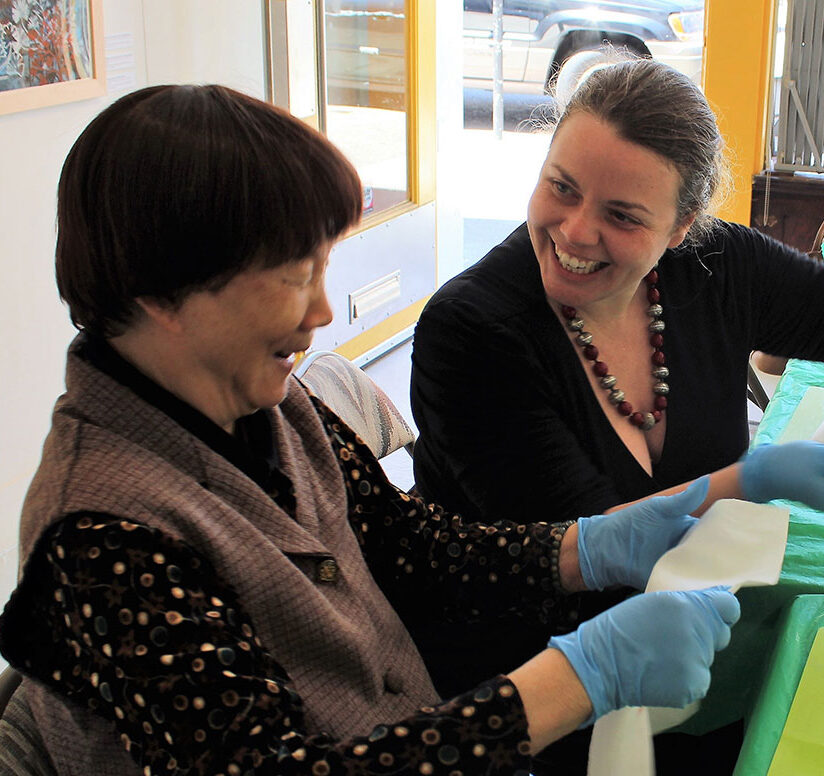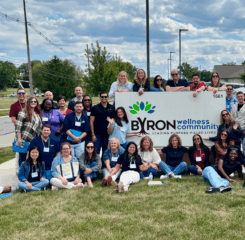After the massive disruptions aging services providers navigated during the COVID-19 pandemic, part of the return to normalcy for some organizations is to expand their home and community-based services (HCBS) offerings. Added emphasis on HCBS should remain a long-term trend among providers, both to accommodate growing demand for aging services and to respond to changing consumer attitudes about residential living.
The 2022 LeadingAge Ziegler 200, which analyzes the nation’s 200 largest not-for-profit senior living organizations across the country, shows that growth continues in home-based services. Among the organizations studied, the data show that 42% offer some type of home and community-based services to non-residents. A related trend in the last year has shown growth in joint ventures and partnerships among the 200, some of which involve the provision of HCBS in conjunction with other providers, health systems, or home health/home care agencies.
“There’s an opportunity to better serve their own communities, whether it’s their internal community or their community at large,” says Joan Punch, president of Senior Options, a non-profit subsidiary of Westminster-Canterbury on the Chesapeake Bay. Her organization helps LeadingAge-member providers launch, build, and sustain HCBS services, supplying expertise, back-office support, and more. Senior Options now serves 14 partner organizations across the country.
“What we’re experiencing is that communities are coming out from under COVID and […] looking at the landscape to see what other opportunities there are,” says Punch. “We’re finding a flurry of interest, and re-engaging in conversations about either supporting already existing HCBS programs or doing startups.”
Punch adds that not considering HCBS services “would be a missed opportunity in terms of service and mission. We all know, [through] COVID, what’s happened to communities in terms of skilled nursing beds, and their whole business models have changed. I think [these services] afford them an opportunity to have another lane of revenue and ability to support themselves.”
A Joint Venture for Services at Home
The roots of First Choice Home Health & Hospice date back to the late 1970s, when it was founded as First Choice Home Care, a home health and home care business. Its current incarnation began in 2007, when the business was purchased by two Virginia-based LeadingAge-member life plan communities (LPCs), Virginia Mennonite Retirement Community and Bridgewater Retirement Community. The two organizations, after assessing the risks of starting their own home health agencies, decided it was wiser to purchase an established provider.
In 2015, a third LPC, Sunnyside Retirement Community, bought into the joint venture.
According to First Choice Administrator Donna Selby, First Choice is a for-profit LLC providing home health and hospice services in four Virginia counties, and non-clinical home care (all private pay), in Harrisonburg and Rockingham County. In 2021, it provided almost 5,000 hours of private duty care per month and 800 home health episodes, and served more than 140 hospice patients.
Recruiting adequate staff is a challenge for HCBS providers, just as it is for residential communities, and Selby says it is the missing element in potential growth for First Choice. There is a waiting list for private duty clients because of lack of staff, she says, adding, “Right now we have what we need for home health and hospice, but if we lost one person we would be in a little bit of a crisis.”
There is no shortage of demand, Selby says, only staff. Asked about her organization’s capacity, she adds, “On the private duty side, we would have no problem doing 6,500-7,000 hours per month. In home health, we could easily accommodate 120-150 clients, and for hospice, I’d love to see that expand to closer to 100.”
In a presentation at the recent LeadingAge Annual Meeting + EXPO in Denver, Selby noted that despite purchasing an existing agency, the three LPCs still required a lot of time to integrate First Choice’s services into their operations. She emphasized that working in people’s homes is not a good fit with all staff, and says First Choice has job candidates do “ride alongs” with an experienced professional before hiring.
A Partnership Builds Home Health and Hospice Services
In 2014, St. John’s United, a full-continuum provider in Billings, MT, decided to add its own home health and hospice services because its transitional care and CCRC residents were experiencing long waits for home health services.
Like First Choice, St. John’s United drew on existing expertise to get started. Because Montana is a certificate of need state, St. John’s partnered with a local home health agency, Big Sky Senior Services, which already had a home health license it wasn’t using. Also brought into the partnership was the Billings Clinic, the region’s largest hospital system, and St. John’s United Home Health & Hospice was created. St. John’s owns 65% of the agency, the Billings Clinic 30%, and Big Sky 5%. Created as an LLC, the organization is now a non-profit. Hospice services began in 2016. The agency does not offer private duty services; they are provided by a separate entity, St. John’s United At Home.
In 2021, St. John’s United Home Health & Hospice served 600-plus home health patients and almost 120 hospice patients. According to Administrator Brooke Rivera, St. John’s has grown to become the largest home health provider in the area, but growing the hospice services is a challenge, largely because of competition from other local agencies–there are at least four.
Recruiting new staff is a challenge, though Rivera says she is only recruiting for two positions at the moment. Ideally, she says, St. John’s United Home Health & Hospice could serve up to 100 home health patients and 60 hospice patients at a time, though the number of current hospice patients does not now exceed 40.
Rivera says that St. John’s United is committed to growing its home and community-based services. “There is accelerated interest in the wake of pandemic,” she says. “People don’t want to be in another lockdown situation. Even before the pandemic there was a movement toward HCBS, and the people we serve prefer to be served in the community. It’s a broader commitment, to serve people where they want to be served.” She adds that St. John’s United may consider expanding into other areas of Montana. It owns assisted living communities in Laurel and Red Lodge, and manages an assisted living and independent living community in Hamilton.
“Diversifying into home and community-based services is not a brick-and-mortar proposition,” says Michelle Bridges, senior director, business development for Senior Options. (St. John’s United is a client.) “And it allows [providers] to capture the attention of people who might potentially want to come into their [communities].” She echoes Rivera’s observation that St. John’s has a long waiting list for independent living, adding that HCBS clients can benefit from at-home services before physically moving to a residential organization.
Financially, Rivera says, more HCBS makes sense as well: “Honestly, home health and hospice have a margin. Our nursing home has at least 50% Medicaid [residents], and we have a huge Medicaid gap in Montana. Any time you can branch out into a service line with a positive margin, you can help fulfill your mission.”
Innovating to Expand HCBS and Partner With Acute Care
For Hebrew SeniorLife, a Boston-based full-continuum provider, home and community-based services have a long history. Its home health services began in the 1990s to serve residents in its housing communities, and expanded to the wider community about 15 years ago.
According to Maureen Bannan, vice president for home and community-based services for Hebrew SeniorLife, other HCBS programs include: hospice, which began in 2013, and includes special expertise in Jewish hospice; palliative care (on an in-patient basis since 2010 and community-based since 2016); private duty; an adult day health program; and a Medicaid-funded program that offers homemaking, companions, and personal care for those who aren’t receiving certified care.
Hebrew SeniorLife serves more than 1,300 home health patients and almost 250 hospice patients in fiscal year 2022, says Bannan.
Operating in the Boston market, Bannan says, makes recruiting staff very difficult. “We’re competing with high-visibility, acute care institutions–Mass General Hospital to name one. The rates they are offering RNs are very high. And the acute care settings have shifted into using LPNs more, which impacts our business line as well.”
Hebrew SeniorLife launched its own CNA training program for inpatient services, and is about to expand it in the community. Bannan says 15 graduates have come through the program on the inpatient side, and is hopeful the expanded program will bring in some new staff for the community-based services.
Community-based work is especially challenging, Bannan says, because it “requires somebody who understands a holistic approach to health care, the impact of social determinants of health, and somebody who’s comfortable being independent in terms of how they’re caring for patients–[because] their peers are not right there with them, nor is their leader.” Successful community-based services staff is also confident in communicating with primary care physicians or other health team members, and understands the critical role of families in the success of patients’ care plans.
Bannan, whose background includes 25 years in HCBS as a direct care provider and in management, says the complexity of the work continues to grow.
“I haven’t been a direct caregiver in 16 years, and the workload relative to administrative tasks such as documentation and adherence to regulations […] has escalated tremendously.” A home health professional, she says, may be the only person that is seeing a client for several days, and accurate and complete documentation is the key to gaining access to the health care they need.
Hebrew SeniorLife is innovating with two new initiatives. The first is a partnership with a local acute care hospital to develop discharge plans for joint repair patients and heart failure patients–two diagnoses showing high hospital readmission rates. Also related to joint repair is a program that uses remote monitoring equipment to help track and educate joint-repair patients in their homes. “They’ve really benefited from that, and our rehospitalization scores on those patients show it,” says Bannan.
The second innovation is an upgrade to Hebrew SeniorLife’s community-based palliative care program. As Bannan explains it, the current program is a consultative model only, unable to bill under Medicare Part A. “We just submitted an application to the Massachusetts Department of Public Health so that the nurse practitioner can stand alone and bill alone for that service,” she says, under Medicare Part B. “It allows us to offer palliative care to people who are not currently receiving home health care.”

 Shutdown Week Three: Impact of Ongoing Closure on Affordable Housing
Shutdown Week Three: Impact of Ongoing Closure on Affordable Housing Colleagues on the Move, November 12, 2025
Colleagues on the Move, November 12, 2025


